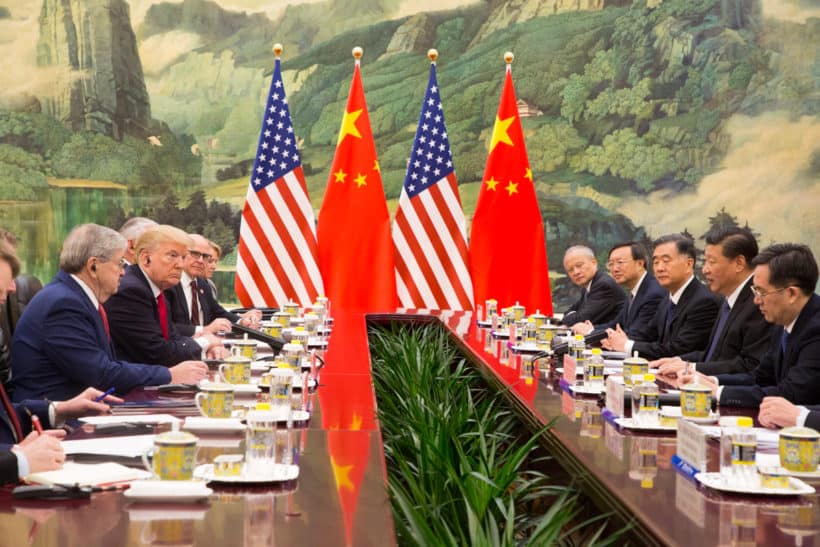After the United Nations criticized U.S. trade policy protectionism and the damage it is doing to the multilateral trading system last week, a follow-up report published Nov. 5 claims U.S. consumers and Chinese exporters are the primary losers in the ongoing U.S.-China trade war.
It argues that “consumers in the U.S. are bearing the heaviest brunt of the U.S. tariffs on China, paying higher prices for imported goods.”
China is also “losing billions due to the raging trade war,” while Mexico, Taiwan, the European Union and Vietnam are gaining as manufacturers switch production and Chinese exporters target new markets — trends that are accelerating.
“United States tariffs against China have resulted in a reduction in imports of the tariffed products by more than 25%,” noted the report by trade analyst Alessandro Nicita in a paper commissioned by the Switzerland-based U.N. Conference on Trade and Development (UNCTAD).
“The results indicate that the United States tariffs on China are economically hurting both countries.”
China’s export losses
China’s export losses have increased over time, with losses in the second quarter of 2019 relatively higher than in previous quarters, according to the report. “Regarding prices, the analysis finds some indications that Chinese exporters may have started in the second quarter of 2019 to bear part of the costs of the tariffs in the form of lower export prices,” it added.
UNCTAD’s findings reinforce the latest China trade data. China’s export growth in greenback terms fell 3.2% year-on-year in September, according to customs data released Oct. 14, after also declining 1% compared to a year earlier in August.
The drop in China’s export growth was largely attributable to the mammoth decline in shipments to the U.S., which fell 21.9% year-over-year in September, and also receded from the 16% drop recorded in August.
This resulted in average Chinese export growth to the U.S. of negative 15.1% in Q3, a decline from negative 8.2% in Q2.
“After adjusting for Lunar New Year distortions, September export growth [to the U.S.] was the lowest single-month reading since January 1996, when the data series was first released by China customs,” noted Japanese financial services group Nomura.
Trump’s onshoring failure
Although President Donald Trump called for the repatriation of manufacturing from China, Nomura said many producers were instead opting for low-cost options elsewhere in Asia to maintain profit levels.
The UNCTAD report by Nicita reaches much the same conclusion. It found that Taiwan was the largest beneficiary of the trade diversion effects of United States tariffs on China, accounting for additional exports to the United States of almost US$4.2 billion in the first half of 2019, mostly due to an increase in exports of office machinery and communication equipment.
Mexico’s increase in exports to the United States due to tariffs on China are quantified to be about US$3.5 billion, mostly in the agri-food, transport equipment and electrical machinery sectors.
The European Union benefited by trade diversion effects of about US$2.7 billion, largely due to increases in exports in the machinery sectors, while Vietnam benefited by about US$2.6 billion, mostly due to increases in exports of communication equipment and furniture.
“Trade diversion effects in favor of the Republic of Korea, Canada and India were smaller but still substantial — between US$900 million and US$1.5 billion,” said the report.
“The remainder of the trade diversion effects was largely to the advantage of other Southeast Asian countries (US$1.7 billion).”
More articles by Mike










